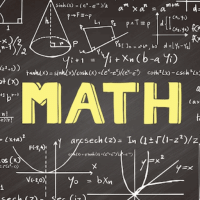JEE Exam > JEE Questions > In ΔABC , r + r3 + r1 − r2 =a)4R ...
Start Learning for Free
In ΔABC , r + r3 + r1 − r2 =
- a)4R cosA
- b)4R cosB
- c)4R cosC
- d)4R
Correct answer is option 'B'. Can you explain this answer?
Most Upvoted Answer
In ΔABC , r + r3 + r1 − r2 =a)4R cosAb)4R cosBc)4R cosCd)4...
In mathematics, an equation is a statement that two expressions are equal. It consists of two sides, the left-hand side and the right-hand side, separated by an equal sign (=). The values of variables or unknowns are usually denoted by letters, and the equation represents a relationship between these variables.
Equations can be classified into different types based on their properties. Some common types include:
- Linear Equations: These equations involve only linear terms, where the highest power of the variable is 1. Example: 2x + 3 = 7.
- Quadratic Equations: These equations involve a quadratic term, where the highest power of the variable is 2. Example: x^2 + 3x - 4 = 0.
- Polynomial Equations: These equations involve multiple terms with different powers of the variable. Example: 2x^3 - 5x^2 + 3x - 1 = 0.
- Exponential Equations: These equations involve exponential functions. Example: 2^x = 16.
- Logarithmic Equations: These equations involve logarithmic functions. Example: log(x) = 2.
- Trigonometric Equations: These equations involve trigonometric functions. Example: sin(x) = 0.
Solving an equation means finding the values of the variables that satisfy the equation. This can be done using various techniques, such as algebraic manipulation, factoring, completing the square, or using numerical methods like Newton-Raphson method or bisection method.
Equations are fundamental in mathematics and are used in various fields like physics, engineering, economics, and computer science to model and solve real-world problems.
Equations can be classified into different types based on their properties. Some common types include:
- Linear Equations: These equations involve only linear terms, where the highest power of the variable is 1. Example: 2x + 3 = 7.
- Quadratic Equations: These equations involve a quadratic term, where the highest power of the variable is 2. Example: x^2 + 3x - 4 = 0.
- Polynomial Equations: These equations involve multiple terms with different powers of the variable. Example: 2x^3 - 5x^2 + 3x - 1 = 0.
- Exponential Equations: These equations involve exponential functions. Example: 2^x = 16.
- Logarithmic Equations: These equations involve logarithmic functions. Example: log(x) = 2.
- Trigonometric Equations: These equations involve trigonometric functions. Example: sin(x) = 0.
Solving an equation means finding the values of the variables that satisfy the equation. This can be done using various techniques, such as algebraic manipulation, factoring, completing the square, or using numerical methods like Newton-Raphson method or bisection method.
Equations are fundamental in mathematics and are used in various fields like physics, engineering, economics, and computer science to model and solve real-world problems.

|
Explore Courses for JEE exam
|

|
In ΔABC , r + r3 + r1 − r2 =a)4R cosAb)4R cosBc)4R cosCd)4RCorrect answer is option 'B'. Can you explain this answer?
Question Description
In ΔABC , r + r3 + r1 − r2 =a)4R cosAb)4R cosBc)4R cosCd)4RCorrect answer is option 'B'. Can you explain this answer? for JEE 2025 is part of JEE preparation. The Question and answers have been prepared according to the JEE exam syllabus. Information about In ΔABC , r + r3 + r1 − r2 =a)4R cosAb)4R cosBc)4R cosCd)4RCorrect answer is option 'B'. Can you explain this answer? covers all topics & solutions for JEE 2025 Exam. Find important definitions, questions, meanings, examples, exercises and tests below for In ΔABC , r + r3 + r1 − r2 =a)4R cosAb)4R cosBc)4R cosCd)4RCorrect answer is option 'B'. Can you explain this answer?.
In ΔABC , r + r3 + r1 − r2 =a)4R cosAb)4R cosBc)4R cosCd)4RCorrect answer is option 'B'. Can you explain this answer? for JEE 2025 is part of JEE preparation. The Question and answers have been prepared according to the JEE exam syllabus. Information about In ΔABC , r + r3 + r1 − r2 =a)4R cosAb)4R cosBc)4R cosCd)4RCorrect answer is option 'B'. Can you explain this answer? covers all topics & solutions for JEE 2025 Exam. Find important definitions, questions, meanings, examples, exercises and tests below for In ΔABC , r + r3 + r1 − r2 =a)4R cosAb)4R cosBc)4R cosCd)4RCorrect answer is option 'B'. Can you explain this answer?.
Solutions for In ΔABC , r + r3 + r1 − r2 =a)4R cosAb)4R cosBc)4R cosCd)4RCorrect answer is option 'B'. Can you explain this answer? in English & in Hindi are available as part of our courses for JEE.
Download more important topics, notes, lectures and mock test series for JEE Exam by signing up for free.
Here you can find the meaning of In ΔABC , r + r3 + r1 − r2 =a)4R cosAb)4R cosBc)4R cosCd)4RCorrect answer is option 'B'. Can you explain this answer? defined & explained in the simplest way possible. Besides giving the explanation of
In ΔABC , r + r3 + r1 − r2 =a)4R cosAb)4R cosBc)4R cosCd)4RCorrect answer is option 'B'. Can you explain this answer?, a detailed solution for In ΔABC , r + r3 + r1 − r2 =a)4R cosAb)4R cosBc)4R cosCd)4RCorrect answer is option 'B'. Can you explain this answer? has been provided alongside types of In ΔABC , r + r3 + r1 − r2 =a)4R cosAb)4R cosBc)4R cosCd)4RCorrect answer is option 'B'. Can you explain this answer? theory, EduRev gives you an
ample number of questions to practice In ΔABC , r + r3 + r1 − r2 =a)4R cosAb)4R cosBc)4R cosCd)4RCorrect answer is option 'B'. Can you explain this answer? tests, examples and also practice JEE tests.

|
Explore Courses for JEE exam
|

|
Signup to solve all Doubts
Signup to see your scores go up within 7 days! Learn & Practice with 1000+ FREE Notes, Videos & Tests.



























